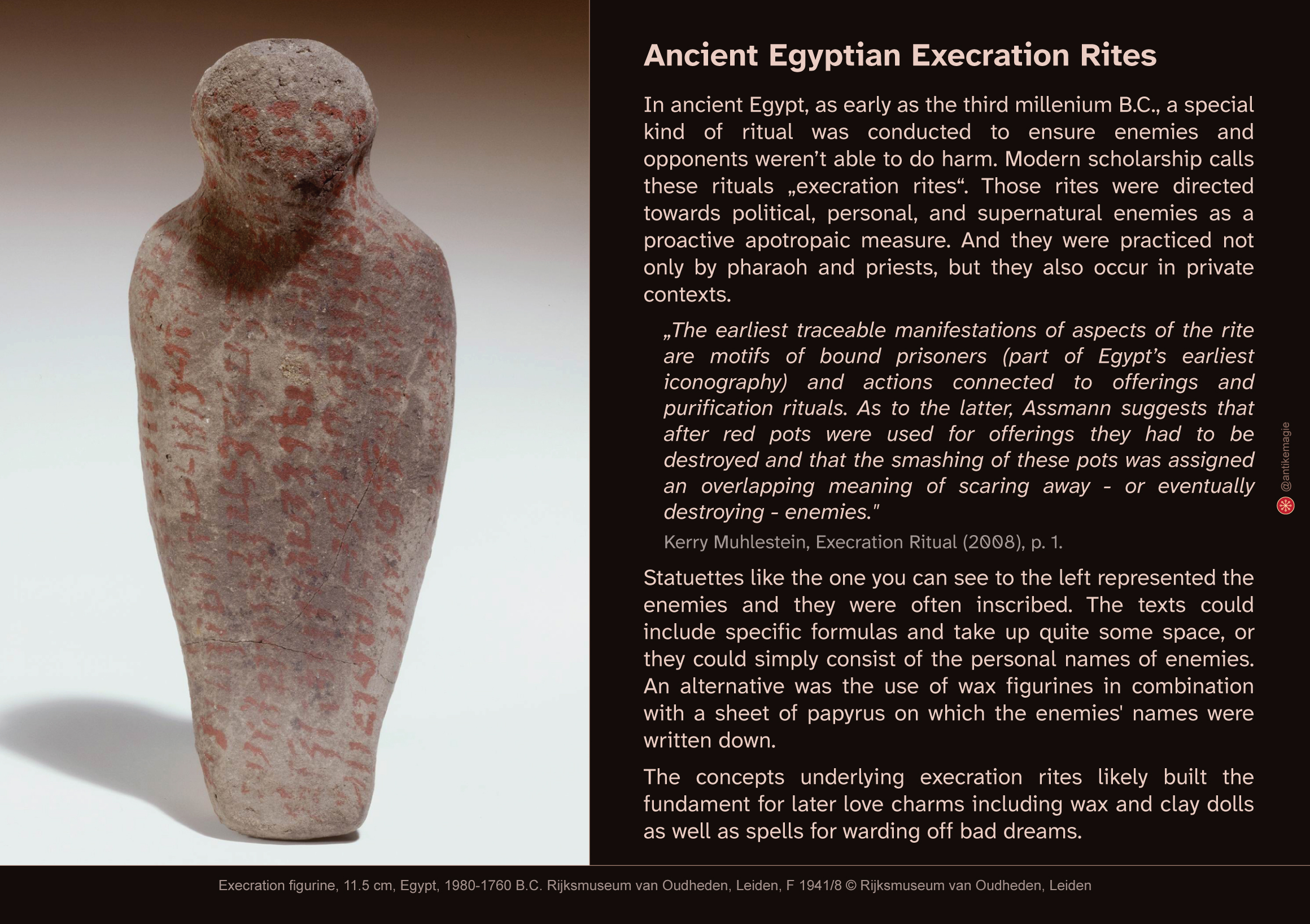In ancient Egypt, as early as the third millenium BCE, a special kind of ritual was conducted to ensure enemies and opponents weren’t able to do harm. Modern scholarship calls these rituals „execration rites“. Those rites were directed towards political, personal, and supernatural enemies as a proactive apotropaic measure. And they were practiced not only by pharaoh and priests, but they also occur in private contexts.
„The earliest traceable manifestations of aspects of the rite are motifs of bound prisoners (part of Egypt’s earliest iconography) and actions connected to offerings and purification rituals. As to the latter, Assmann suggests that after red pots were used for offerings they had to be destroyed and that the smashing of these pots was assigned an overlapping meaning of scaring away – or eventually destroying – enemies.”
Kerry Muhlestein, Execration Ritual, 2008, p. 1
Statuettes like the one you can see to the left represented the enemies and they were often inscribed. The texts could include specific formulas and take up quite some space, or they could simply consist of the personal names of enemies. An alternative was the use of wax figurines in combination with a sheet of papyrus on which the enemies’ names were written down.
The concepts underlying execration rites likely built the fundament for later love charms including wax and clay dolls as well as spells for warding off bad dreams.
Execration figurine, 11.5 cm, Egypt, 1980-1760 B.C. Rijksmuseum van Oudheden, Leiden, F 1941/8 © Rijksmuseum van Oudheden, Leiden

Become a patron for more infographics, research and videos: https://www.patreon.com/ancientmagic
